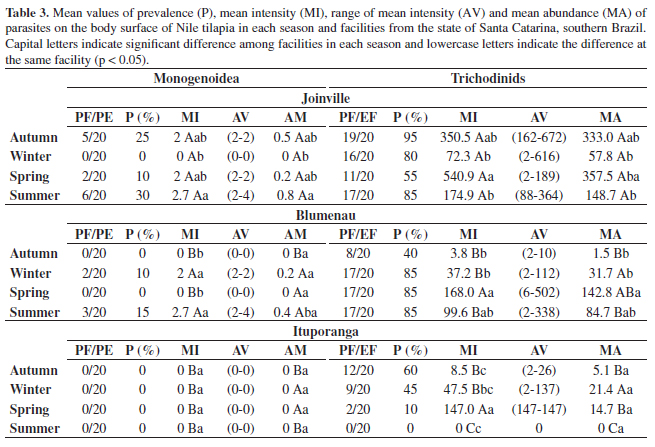A total of 240 Nile tilapia were examined between April 2007 and March 2008, gathered from three different fish farms, 20 fish in each fish farm, in the four seasons of the year. Fish ponds were located in Joinville, Blumenau and Ituporanga, Santa Catarina state, Brazil and each pond had a different culture system. Prevalence, mean intensity, mean abundance and mean relative dominance were compared among fish ponds and seasons. During this period, the water quality was kept in normal values. Piscinoodinium pillulare (Dinoflagellida) was the most dominant parasite followed by Trichodina magna e T. compacta (Ciliophora), Cichlydogyrus sclerosus, C halli, C. thurstonae, Scutogyrus longicornis (Monogenoidea), copepodids Lernaeidae gen. sp. The highest prevalence, mean intensity and mean abundance of ectoparasites were found on the body surface in fish from Joinville followed by Blumenau and Ituporanga. In the gills, the highest mean intensity and mean abundance were found in fish from Blumenau and Ituporanga in the winter. Piscinoodinium pillulare showed prevalence 100% during autumn in Blumenau and Ituporanga. In winter P. pillulare occurred in all study facilities. Fish from Joinville showed 100% prevalence of Monogenoidea during all seasons, as well as the highest mean intensity and abundance. The results showed that the majority of examined fish had higher infestations by protozoan during autumn and winter and higher infestations by metazoan have occurred in spring and summer.
Oreochromis niloticus; ectoparasites; seasonality; Brazil





